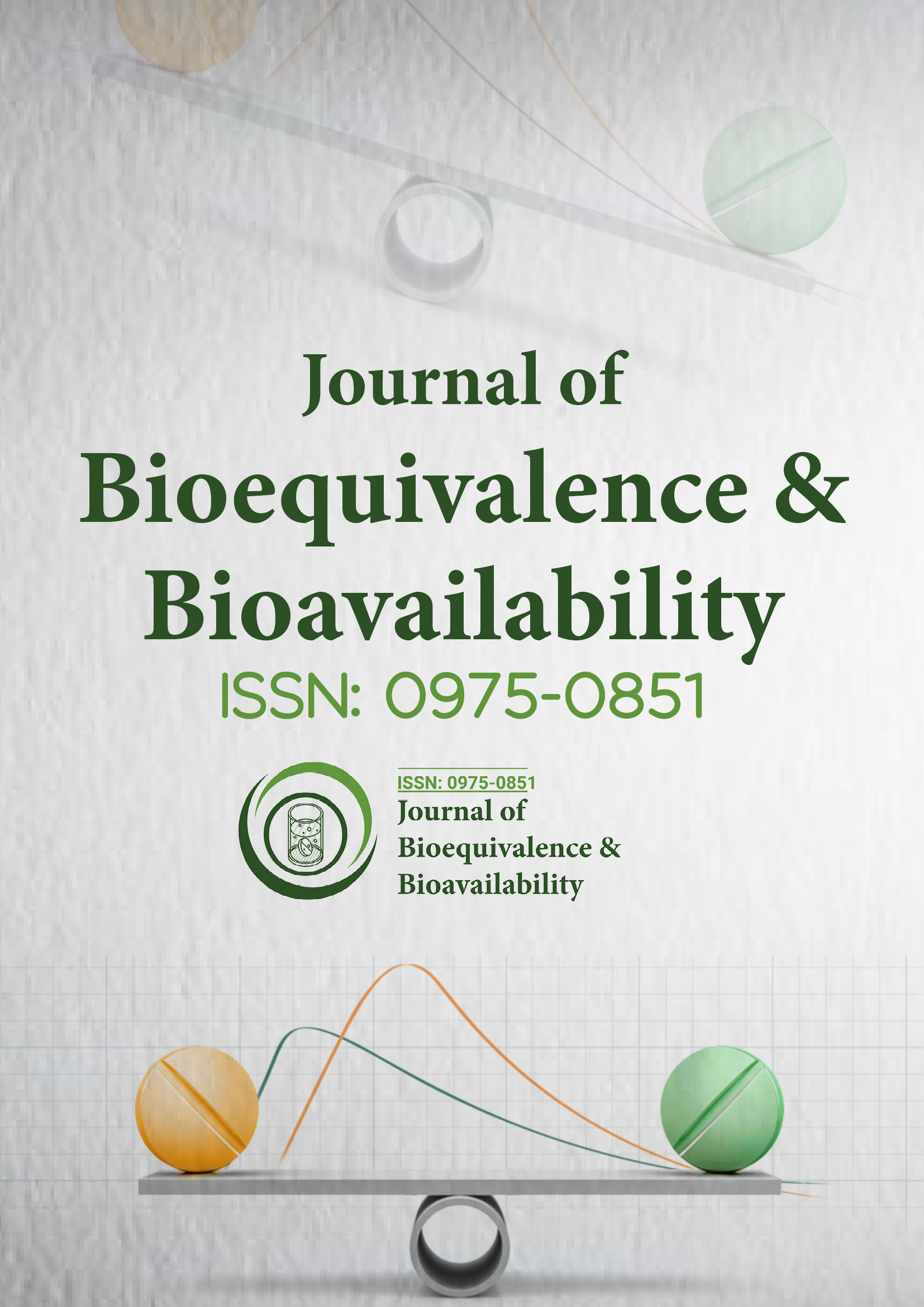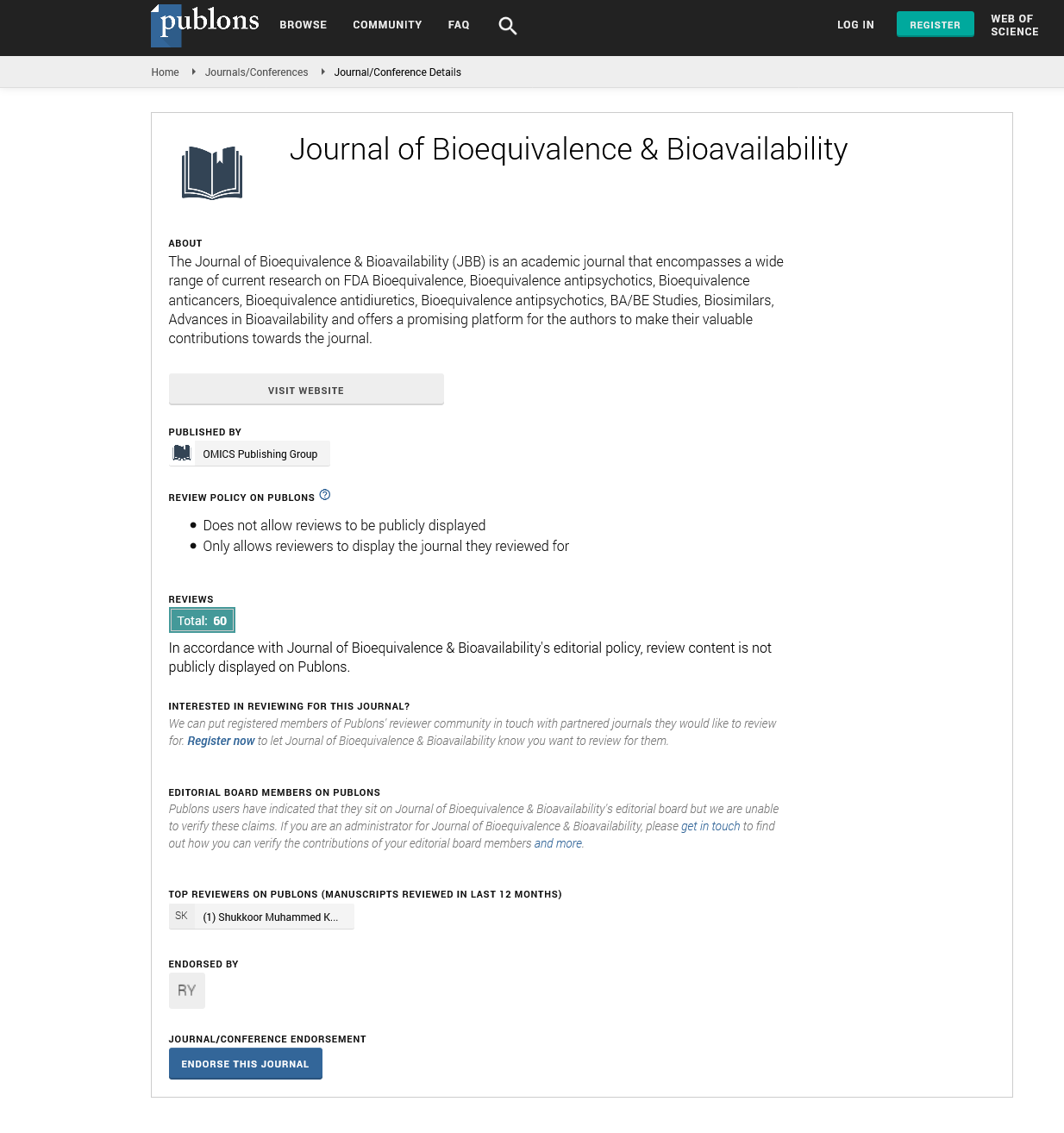Indexed In
- Academic Journals Database
- Open J Gate
- Genamics JournalSeek
- Academic Keys
- JournalTOCs
- China National Knowledge Infrastructure (CNKI)
- CiteFactor
- Scimago
- Ulrich's Periodicals Directory
- Electronic Journals Library
- RefSeek
- Hamdard University
- EBSCO A-Z
- OCLC- WorldCat
- SWB online catalog
- Virtual Library of Biology (vifabio)
- Publons
- MIAR
- University Grants Commission
- Geneva Foundation for Medical Education and Research
- Euro Pub
- Google Scholar
Useful Links
Share This Page
Journal Flyer

Open Access Journals
- Agri and Aquaculture
- Biochemistry
- Bioinformatics & Systems Biology
- Business & Management
- Chemistry
- Clinical Sciences
- Engineering
- Food & Nutrition
- General Science
- Genetics & Molecular Biology
- Immunology & Microbiology
- Medical Sciences
- Neuroscience & Psychology
- Nursing & Health Care
- Pharmaceutical Sciences
Commentary - (2025) Volume 17, Issue 3
The Role of Pharmacodynamics in Therapeutic Effectiveness
Annette Gaiser*Received: 28-May-2025, Manuscript No. JBB-25-30134; Editor assigned: 30-May-2025, Pre QC No. JBB-25-30134 (PQ); Reviewed: 13-Jun-2025, QC No. JBB-25-30134; Revised: 20-Jun-2025, Manuscript No. JBB-25-30134 (R); Published: 29-Jun-2025, DOI: 10.35248/0975-0851.25.17.634
Description
Pharmacodynamics is the branch of pharmacology that studies the biochemical and physiological effects of drugs and their mechanisms of action on the body. While pharmacokinetics describes what the body does to the drug, pharmacodynamics explains what the drug does to the body. Together, these two disciplines form the foundation of rational drug development, dosage optimization, and therapeutic efficacy. Understanding pharmacodynamics is essential for predicting drug response, minimizing toxicity, and improving patient outcomes.
Drug action begins when a drug interacts with its specific target, such as a receptor, enzyme, ion channel, or nucleic acid. The binding of a drug to its target triggers a cascade of molecular and cellular events that ultimately result in a therapeutic or toxic effect. The strength of this interaction is governed by the drug’s affinity for its receptor and its intrinsic activity, which determines the magnitude of the response. Drugs that activate receptors and produce a biological response are known as agonists, whereas those that block receptor activation are termed antagonists. Partial agonists exhibit intermediate efficacy, providing a controlled pharmacological effect without maximal activation.
Pharmacodynamic responses can be influenced by several physiological and pathological factors. Age, genetics, disease state, and concurrent medications can all alter receptor sensitivity or downstream signaling pathways. For example, genetic polymorphisms in receptor genes or signal transduction proteins can lead to variations in drug response among individuals. Additionally, tolerance may develop with prolonged drug use, where the body becomes less responsive to a drug, requiring higher doses to achieve the same therapeutic effect. Conversely, hypersensitivity reactions can occur when small doses trigger exaggerated responses.
The concept of therapeutic window is also central to pharmacodynamics. It defines the range of drug concentrations that produces effective therapy without causing adverse effects. Drugs with a narrow therapeutic window, such as digoxin or warfarin, require precise dosing and close monitoring to avoid toxicity. Pharmacodynamic studies are therefore essential in determining appropriate dosing regimens that maintain plasma concentrations within this safe and effective range.
Advances in molecular biology and systems pharmacology have significantly enhanced the understanding of pharmacodynamic mechanisms. The integration of genomics, proteomics, and metabolomics enables researchers to identify novel drug targets and predict individual variability in drug response. Computational models that combine pharmacokinetic and pharmacodynamic data known as PK/PD models are increasingly used to simulate drug behavior in the body and predict therapeutic outcomes. These models are particularly valuable in bioequivalence studies, where understanding the pharmacodynamic equivalence of generic formulations ensures similar clinical efficacy to the original product.
In conclusion, pharmacodynamics provides the scientific basis for understanding how drugs exert their effects at the molecular, cellular, and systemic levels. It bridges the gap between chemical structure and clinical response, allowing for rational design and safe use of therapeutic agents. A comprehensive understanding of pharmacodynamics, coupled with pharmacokinetic principles, is indispensable for achieving optimal drug therapy, ensuring bioequivalence, and advancing personalized medicine. Continued research in this field will further refine our ability to predict and control drug effects, ultimately improving patient safety and therapeutic success.
Citation: Gaiser A (2025). The Role of Pharmacodynamics in Therapeutic Effectiveness. J Bioequiv Availab. 17:634.
Copyright: © 2025 Gaiser A. This is an open-access article distributed under the terms of the Creative Commons Attribution License, which permits unrestricted use, distribution, and reproduction in any medium, provided the original author and source are credited.

